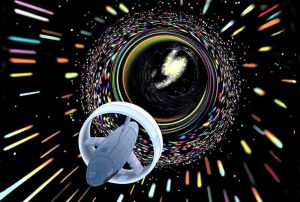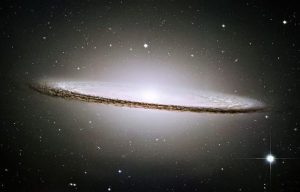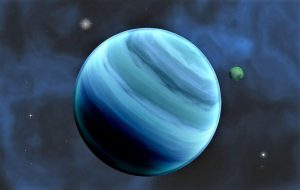Wormhole
A wormhole is basically a theoretical passage through space and time that could create shortcuts to long journeys through the universe. Wormholes are predicted by the theory of general relativity. But wormholes are supposed to bring with them the dangers of sudden collapse, high radiation and dangerous contact with exotic matter from which we have no information.
What is a wormhole?
The wormhole is a tunnel that connects two different points between space and time, which in other words we can define as a tunnel to two parallel universes.
Wormhole theory
The wormhole theory first emerged in 1916, although that was not the name it had at the time. Reviewing the equations in Albert Einstein’s theory of general relativity, the Austrian physicist Ludwig Flamm realized that another solution was possible. He described a “white hole“, a theoretical time inversion of a black hole.
The inputs to both, black and white holes could be connected by a conduit connecting space-time. In 1935, Einstein and physicist Nathan Rosen used the General Relativity Theory to elaborate the idea of holes, proposing the existence of some kind of bridges through space and time, and according to the theory, holes connected two different worlds through hyperspace, a dimension that had been created from the distortion of time and gravity. These bridges were responsible for connecting two different points in space-time, theoretically they were able to create a shortcut that could reduce travel time and distance. The shortcuts were called Einstein-Rosen bridges, or wormholes.
History
The wormhole was born thanks to John Wheeler in 1957. He thought that just as a worm went through an apple, the phenomenon of reaching another world could be explained. The story is based on the so-called Einstein-Rosen bridge, first given by Albert Einstein and Nathan Rosen in 1935. These roads, called Einstein-Rosen bridges or wormholes, according to scientists can connect two different points.
Types of wormhole
According to scientists and theory, there are two types of wormholes:
- Intra universe wormholes that connect one position in one universe to another position in the same universe but located at a different time. They can connect distant positions in the universe through space-time folding, which would allow them to travel in less time than it would take to travel through normal space.
- Inter universe wormholes associate one universe with a totally different one and are also called Schwarzschild wormholes. This type of wormhole could be used to travel from one universe to another parallel universe.
- There has also been talk of another type of classification, the Euclidean wormholes, the Lorentz wormholes, mainly studied in general relativity and gravity, the Schwarzschild wormhole, the Reissner-Nordstrøm or Kerr-Newman black hole, which and the Lorentz wormhole, which has negative mass, and which could direct journeys to the past and future.
Wormholes for time travel
In theory, wormholes are able to take us on journeys through space and time by dilating relative time, which would result in a mouth in the hole. Time passes differently through the hole with respect to the outside, so that, anything that gets in through this mouth could get out at a different point in time than the first. However, it is considered impossible to turn a wormhole into a time machine.
These journeys would be made at the speed of light, but using a shortcut provided by the same holes. The object would then be able to pass through the wormhole and reach its destination before a ray of light could travel the same distance. Time travel has been demonstrated through the general theory of relativity from the point of view of quantum theory.
Stephen Hawking and wormholes
The physicist has made a series of descriptions of the wormholes. According to his theory, they exist everywhere and are presented by the quantum foam around us. For him, the only problem with time travel is that the holes are too small for a person or a ship to reach.
How to cite this article?
Briceño V., Gabriela. (2019). Wormhole. Recovered on 3 May, 2025, de Euston96: https://www.euston96.com/en/wormhole/










